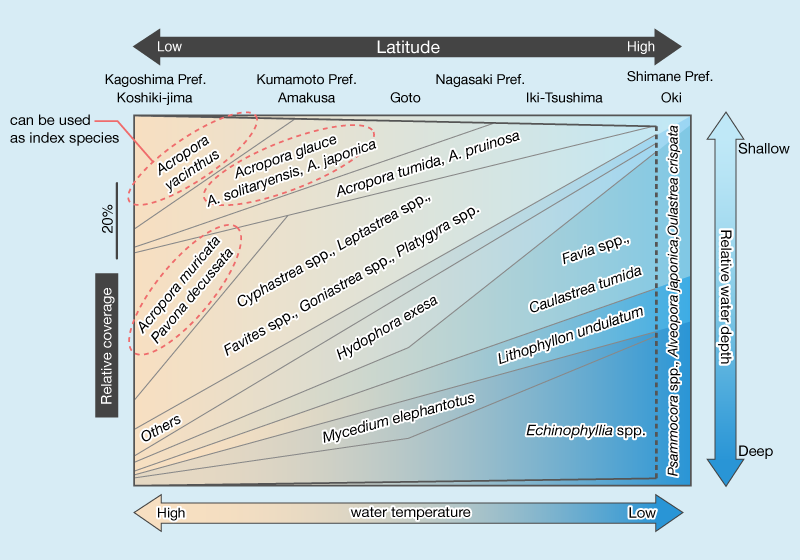Monitoring Project for Climate Change Effects on Marine Environment

It has been reported that coral communities are moving northwards due to rising water temperatures. Through monitoring the changes in the distribution of coral species we detect the impacts of global warming. It is also known that different sorts of the microalgae zooxanthellae which live in symbiosis with coral have different genotypes and environmental tolerance. We monitor therefore also the genetic change of zooxanthellae to detect the impacts of global warming.
We have so far carried out the following studies:
- Investigation of coral communities at different latitudes in order to determine the species that exist in warmer climates (index species),
- Comparison of historical records of coral distribution with the current distribution in order to ascertain the northward moving of coral communities,
- Genetic analysis in order to clarify the genotype of zooxanthellae living in the index coral.
Objectives
There are tropical and subtropical organisms whose existence is limited to certain latitudes. In Japan, coral can be found only up to Niigata prefecture on the Sea of Japan coast, and up to Chiba prefecture on the Pacific Ocean coast (Figure 1). In the past 100 years, the temperature of the coastal waters around Japan has risen by approximately 1 degree Celsius (Figure 2). Through long-term monitoring and detection of the changes in organism communities having such a latitudinal limit, we expect that we can assess the impacts of climate change.
At the Center for Global Environmental Research, National Institute for Environmental Studies, we have started long-term monitoring of the ocean in order to study the impacts of rising water temperatures on coral and its symbiotic microalgae, zooxanthellae, existing in the seas adjacent to Japan.


Results and plans in the near future

- We found in our study of coral communities from Kyushu to Honshu that coral that belongs to the genus Acropora disappeared when the water temperature decreased. This implies that the impacts of global warming can be detected if coral of the genus Acropora is used as index species.
- A comparison with historical records on coral distribution showed that coral communities have been moving northwards and/or expanding in higher latitudes in a number of locations in the seas around Japan.
We started long-term monitoring of coral at 8 sites around Japan in cooperation with other research projects, such as the “Monitoring Sites1000” project of the Ministry of the Environment, the “High-latitude coral survey” of the Oceanic Wildlife Society (OWS) and the “Sango (coral) map” project, an activity of the International Year of the Reef (IYOR).

